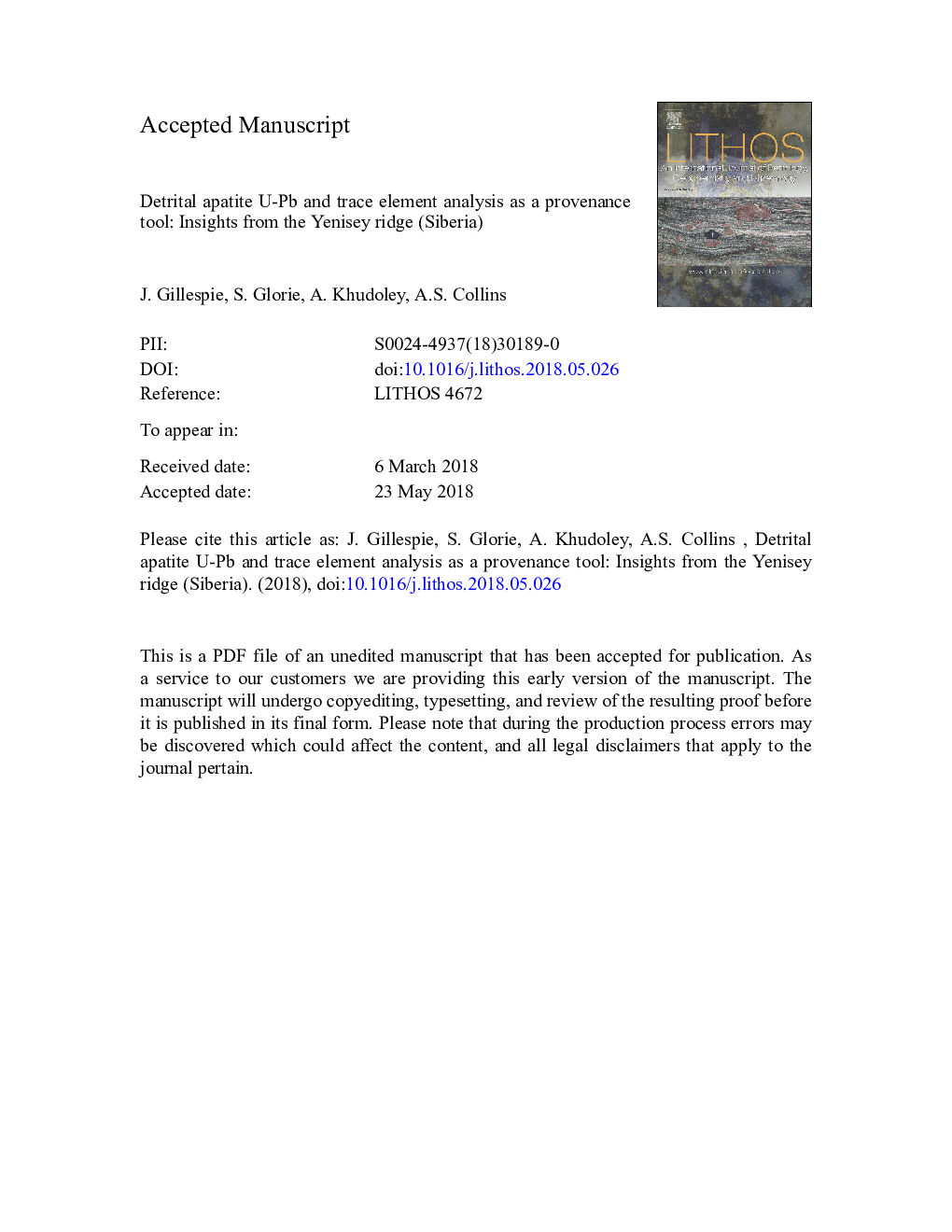| Article ID | Journal | Published Year | Pages | File Type |
|---|---|---|---|---|
| 8911544 | Lithos | 2018 | 49 Pages |
Abstract
The use of zircon U-Pb geochronology to study the provenance of sediment is well-established, yet there are fundamental biases that are hard to avoid. These biases are due, in part, to the limited range of magmatic compositions from which zircon will crystallise. This can manifest as the over/under representation of particular age populations (i.e. sediment sources) in the data. The analysis of apatite, a mineral found in a wide variety of igneous rocks, can help to address this bias in detrital geochronology. In this study, we combine geochemical and U-Pb LA-ICP-MS analysis of individual apatite grains to characterise the potential source rocks. This information is integrated with zircon U-Pb data from the same samples in order to demonstrate the complementary provenance information that can be derived from apatite and zircon archives. The analysis of detrital apatite from sedimentary rocks in the Yenisey Ridge (Siberia) found two main U-Pb age populations. An apatite U-Pb population at 880-720â¯Ma corresponds to Neoproterozoic magmatism in the Yenisey Ridge, and a second at ~1800â¯Ma to magmatism related to the assembly of the Siberian Craton. Abundant Neoproterozoic apatites, many of which have chemistries indicative of crystallising from a mafic magma, are considerably more common than the relatively rare zircons of the same age. The ability of apatite analysis to detect mafic magmatic sources is one of the strengths of this approach that makes it particularly useful when used in combination with zircon U-Pb geochronology. This study shows that multi-method analysis of detrital apatite has the potential to be an important tool in conjunction with detrital zircon analysis in future efforts to understand the provenance of sedimentary rocks.
Related Topics
Physical Sciences and Engineering
Earth and Planetary Sciences
Geochemistry and Petrology
Authors
J. Gillespie, S. Glorie, A. Khudoley, A.S. Collins,
